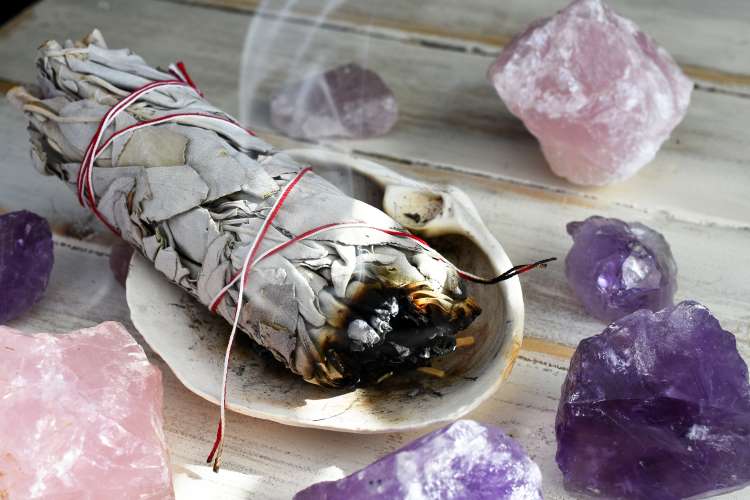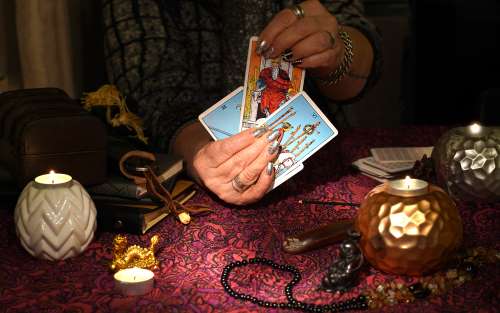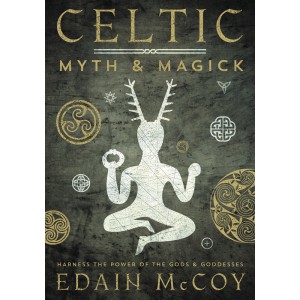The Cailleach: Ancient Celtic Winter Goddess
- December 12, 2024
- 1123
- 0
The Cailleach, revered throughout the ancient British Isles, is one of the most enigmatic and powerful figures in Celtic mythology. Known as the Winter Goddess or Divine Hag, she embodies the harsh, cold beauty of winter and the natural cycles of life and death. The Cailleach is a crone goddess, a representation of the wise elder who oversees the end of the cycle before new beginnings can arise.
The Many Faces of the Cailleach
In Scotland, the Cailleach is often referred to as Cailleach Bheur, or "the Divine Hag." She is depicted with a striking and fearsome appearance: blue-faced, long silver hair flowing like a frozen river, and dressed in grey, reminiscent of storm clouds. This imagery ties her directly to the wintry landscape she commands—snow-covered mountains, howling winds, and frost-bitten earth.
As a goddess of transformation and endings, the Cailleach is also a bringer of death and destruction. Yet, this is not to be feared but understood as a necessary phase in the cycle of life. The barren fields of winter that she governs provide the foundation for the fertility of spring.
The Cailleach and the Changing Seasons
The Cailleach plays a central role in determining the transition between winter and spring. This pivotal moment occurs around Imbolc, the Celtic festival celebrated on Brigid’s Day, February 1st. According to legend, on the eve of Brigid’s Day, the Cailleach retreats to her snow-covered mountain home. Here, she decides whether spring will come early or if winter will linger longer.
The weather on February 1st is said to be an omen of her decision:
- If the sun is shining, it is a sign that the Cailleach is gathering firewood to extend winter. She ensures her survival through a prolonged cold season, fooling those who hope for an early spring.
- If the weather is stormy or foul, it is believed that the Cailleach is asleep, her energy waning. In this case, winter’s grip will loosen, and spring will arrive soon.
This duality reflects the Cailleach's role as a divine force balancing harshness and renewal, reminding us that winter is not simply a time of death but also preparation for rebirth.
The Cailleach’s Symbolism and Legacy
The Cailleach is more than just a weather goddess; she is a personification of the land itself. In some tales, she is said to have created mountains, hills, and valleys by dropping boulders from her apron as she strode across the landscape. Her fierce and unrelenting nature teaches resilience and respect for nature’s cycles.
In her crone aspect, she represents the wisdom of old age and the inevitability of change. Yet, she also holds the promise of transformation, as winter always gives way to spring. The Cailleach embodies the paradox of destruction and renewal, teaching us that endings are not final but part of a greater journey.
Honoring the Cailleach Today
Today, the Cailleach is still honored in modern pagan and Wiccan traditions. She serves as a reminder to embrace the darker seasons of life, knowing that they are necessary for growth. Meditating on her energy can bring clarity and strength, especially during times of hardship and transition.
Whether you view her as a goddess of the land, the seasons, or the cycle of life itself, the Cailleach remains a powerful figure of awe and inspiration, as timeless and unyielding as the mountains she is said to have created.
Related Posts
Hecate Unveiled: Exploring the History and Mythology of the Witchcraft Goddess
- 1683
- 0
Step into the twilight whispers of ancient myths with the Goddess Hecate, the enigmatic ruler of crossroads, magic, and the moonlit night. She's a figure shrouded in mystery, her torches casting shado..
The Meaning of the Triple Goddess: Unveiling the Profound Mysteries
- 1449
- 0
The Triple Goddess, with her three facets—Maiden, Mother, and Crone—has been my constant companion, guiding me through the seasons of my own life. She's whispered in the rustling leaves of spring, cra..
Yule: The Winter Solstice Festival of Light and Rebirth
- 1077
- 0
Explore the rich history and traditions of Yule, the Winter Solstice festival, from its pagan origins to modern celebrations.











